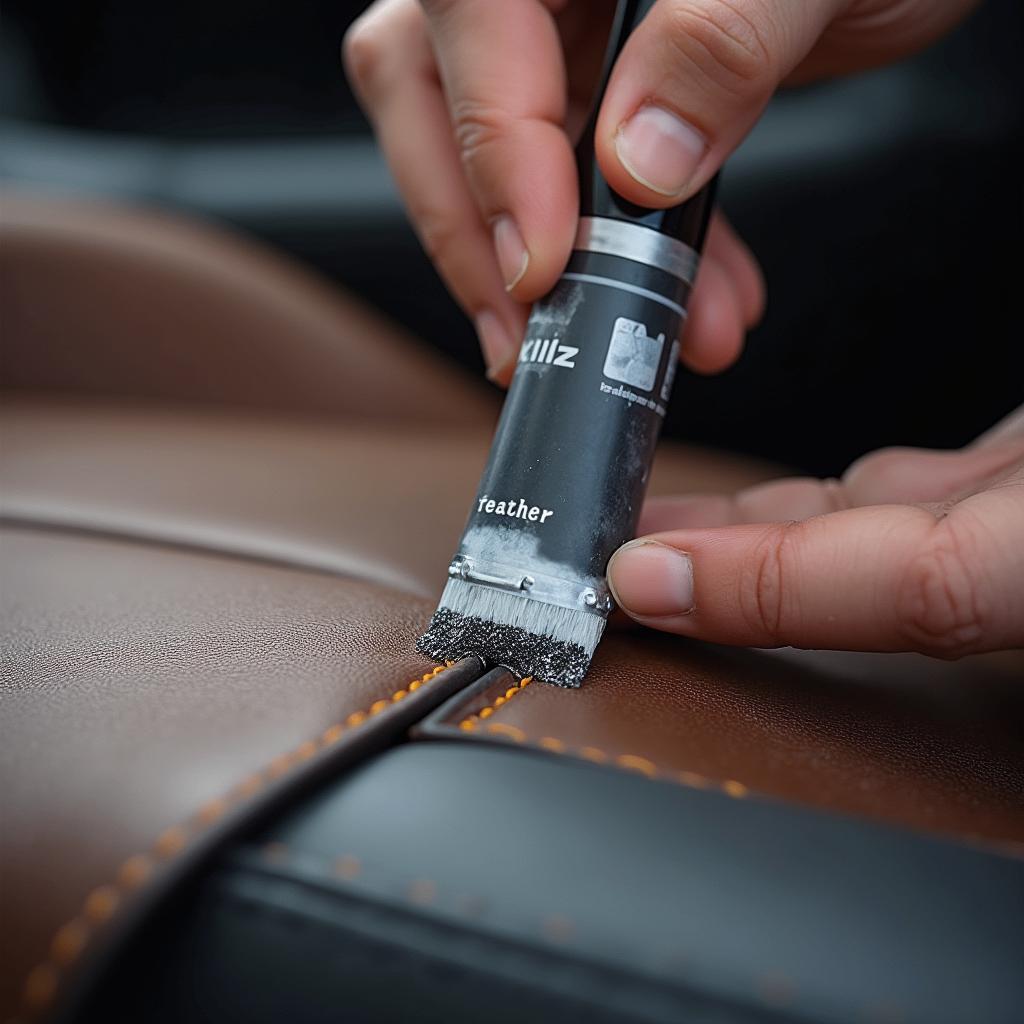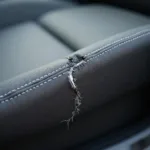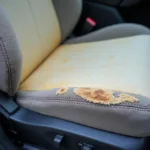Leather car seats exude luxury and sophistication. However, they’re susceptible to wear and tear, with slits being a common problem. A slit in your leather car seat can be a frustrating eyesore. But don’t worry, it doesn’t necessarily mean an expensive trip to the upholsterer. There are effective DIY methods to tackle this issue and restore your car’s interior to its former glory.
Understanding the Slit
Before diving into repair methods, it’s crucial to assess the damage.
- Size: Is it a minor cut or a large gash?
- Location: Is it on the seat surface, the side bolster, or near a seam?
- Severity: Does it penetrate the leather entirely, or is it a surface-level issue?
The answers will determine the most appropriate repair approach.
DIY Repair Methods for Leather Car Seat Slits
1. Leather Repair Kit
Leather repair kits are readily available online and at auto parts stores. These comprehensive kits typically include:
- Cleaning solution: To prep the area
- Filler paste: To fill in the slit
- Color matching compound: To blend the repair seamlessly
- Texture paper: To replicate the leather grain
 Applying Leather Repair Kit on Car Seat
Applying Leather Repair Kit on Car Seat
Expert Insight: “A well-chosen leather repair kit, matched to your car’s interior color, can work wonders on minor to moderate slits,” says John Miller, a veteran auto upholsterer with over 20 years of experience. “The key is patience and attention to detail during the color matching and texture application.”
2. Liquid Leather Repair
For smaller slits and cracks, liquid leather repair solutions offer a convenient fix. These solutions come in various colors and dry flexibly, preventing future cracking. Apply a thin layer onto the cleaned slit, let it dry, and repeat if needed.
3. Subpatching for Larger Tears
If the slit is significant or involves a tear, subpatching might be necessary. This involves:
- Creating a Backing: A piece of canvas or similar fabric is cut slightly larger than the tear and glued underneath the slit for support.
- Filling the Gap: Leather filler is used to fill the gap, ensuring it’s level with the surrounding surface.
- Blending and Texturing: Color matching compound and texture paper are used to create a seamless finish.
When to Consult a Professional
While DIY methods are effective for many cases, professional help is recommended if:
- The slit is extensive and involves multiple layers of the seat.
- The damage is near critical structural components like airbags.
- You lack the time or confidence to perform a DIY repair.
Conclusion
Repairing slits in your leather car seats doesn’t always require professional intervention. By assessing the damage and utilizing the appropriate DIY methods, you can restore your car’s interior and prolong the life of your leather seats. However, don’t hesitate to seek professional help for severe damage or if you’re unsure about any aspect of the repair process.
FAQ
-
Can I use superglue on a leather car seat slit? It’s not recommended. Superglue is too harsh for leather and can cause further damage.
-
How long does it take for leather repair products to dry? Drying times vary, but it’s best to allow at least 24 hours for complete curing.
-
Can I prevent future slits in my leather car seats? Regular cleaning and conditioning with leather-specific products help maintain flexibility and prevent cracking.
Need Help? Contact Us!
For expert assistance with your car repair needs, contact us via WhatsApp: +1(641)206-8880, or Email: [email protected]. Our dedicated team is available 24/7 to provide you with top-notch support.


